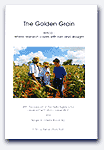The golden Grain
After a long-term and sustained
strategic research effort at the CIMMYT headquarters in Mexico, researchers
arrived at a new breeding method that promised considerable yield gains
under drought and low soil fertility conditions.
 |
Africa:
Where research copes with rain and drought. Part 2 of a documentary
on international human development project cooperation. Running time
26 minutes. [RealPlayer Homepage] |
To develop maize strains that better
tolerate drought and low soil fertility conditions has been a dream of
CIMMYT researchers since the seventies. In 1996, a new breeding method
was ready to be tested in one of the toughest environments in the world
- Southern Africa.
Southern Africa has one of the most variable
rainfall patterns in the world. Soil fertility is often poor, particularly
as many farmers cannot afford to purchase costly fertilizers or do not
have cattle that could provide them with manure. Maize is the most important
staple food in this region.
Dr. Marianne Banziger is the project coordinator of the Southern African
Drought and Low Soil Fertility Project, the project that carries hopes
of researchers and farmers alike.
When the Drought and Low Soil Fertility Project started in 1996, many
people thought that it would not be possible to find maize cultivars with
significantly higher yields under drought or nitrogen stress.
Today, the project has produced new varieties with 30 to 50 % more yield
under stress conditions -
conditions that are typical for resource-poor farmers in this region.
This has only been possible because Marianne and her colleagues have been
able to use such a wide genetic variability.
[back]